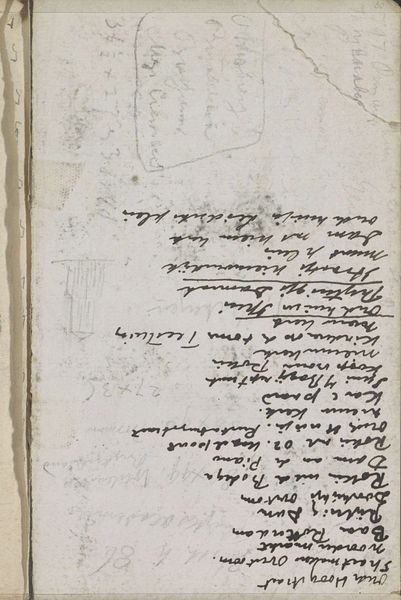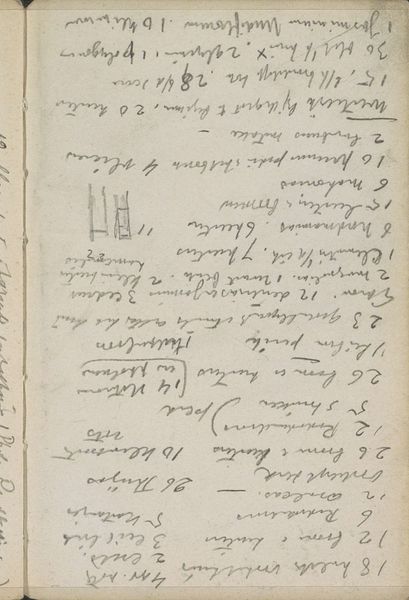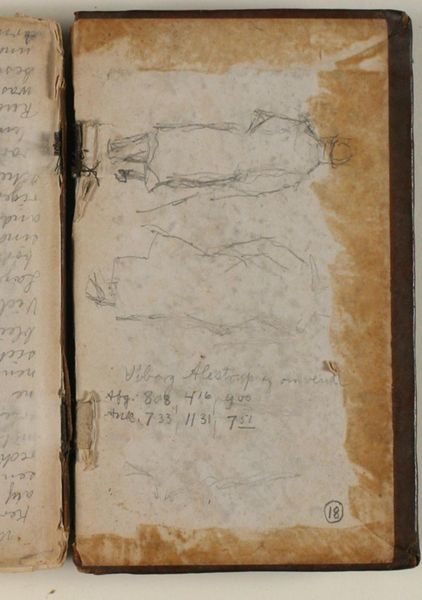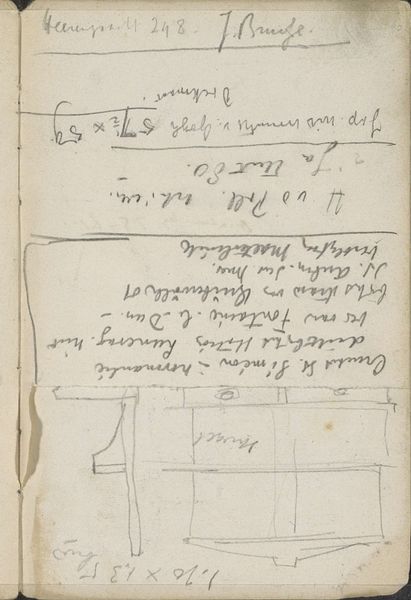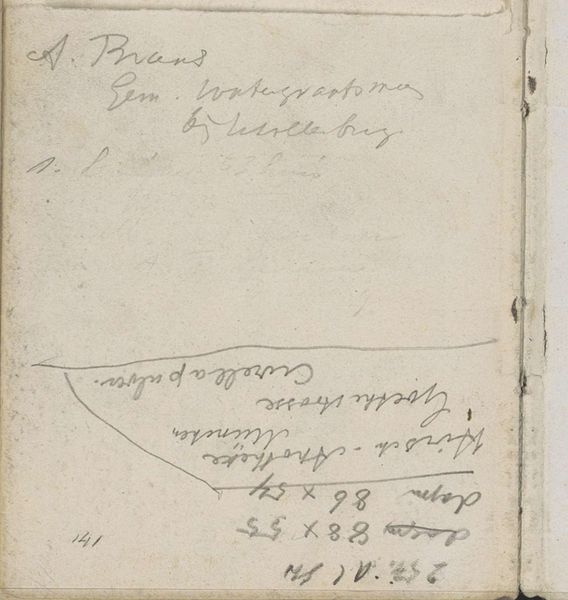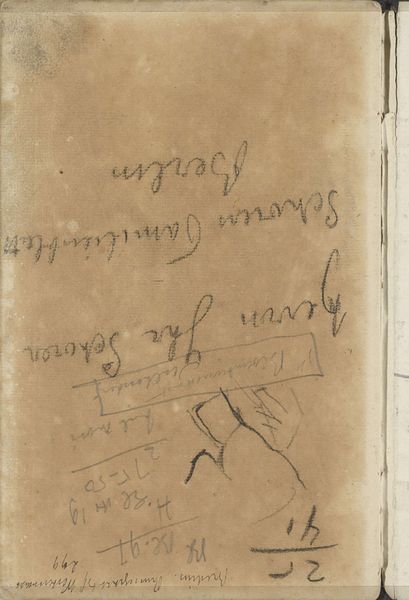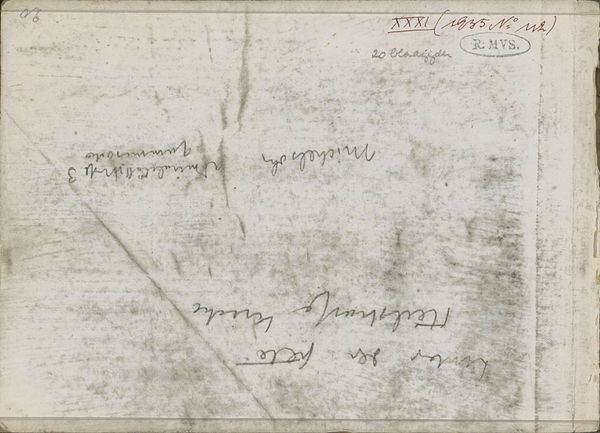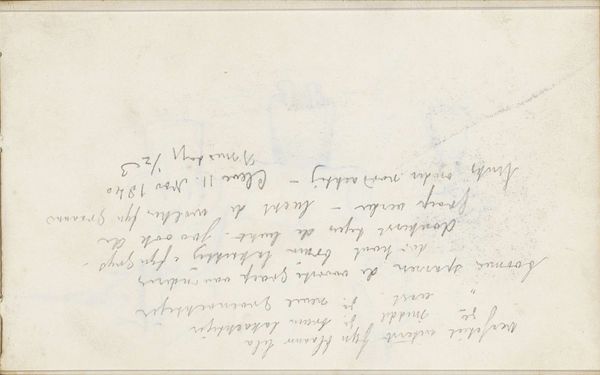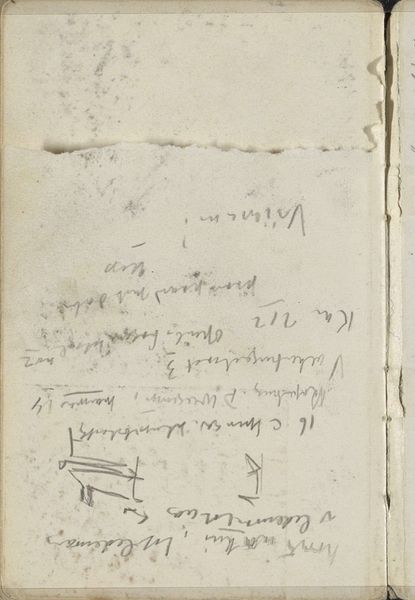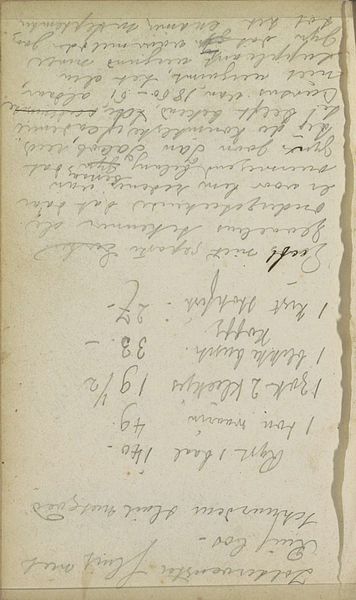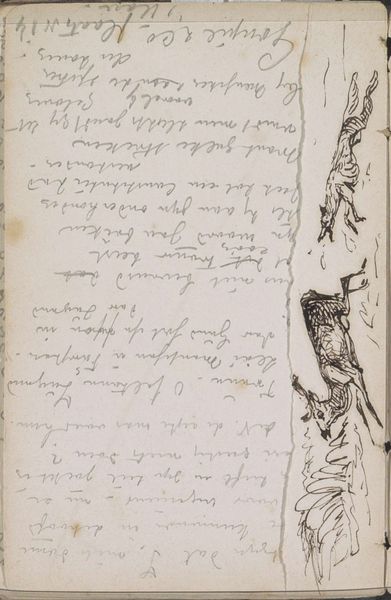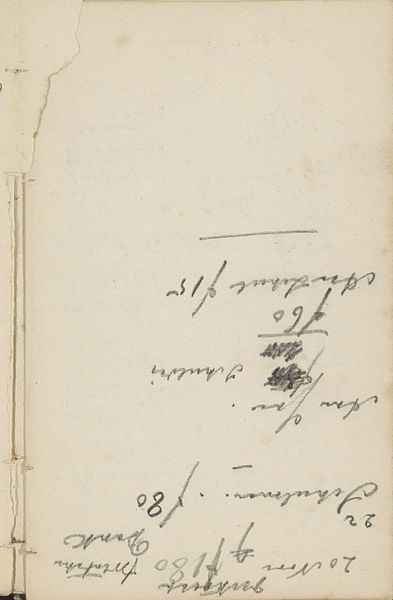
Copyright: Rijks Museum: Open Domain
Editor: This is "Figuurstudies" or "Figure Studies," a pencil drawing on paper by George Hendrik Breitner, made sometime between 1891 and 1894. It feels like a collection of fleeting thoughts, sketched in the moment. What can you tell me about it? Curator: Breitner's sketchbooks offer a powerful glimpse into the realities of late 19th-century Amsterdam, especially through the lens of class and gender. These weren’t commissioned portraits; they captured ordinary people. Do you notice how quickly these figures are rendered, almost as if they were captured candidly on the streets? Editor: Yes, the lines are so quick and loose, suggesting a snapshot aesthetic, very much in keeping with Impressionism. Was he trying to make a particular statement through these casual sketches? Curator: Breitner positioned himself as the "people's painter." This piece prompts questions about the male gaze and the act of observation. Breitner's fascination with working-class women raises questions about representation, voyeurism, and the power dynamics inherent in the artist-model relationship. What social commentary might be embedded in this snapshot aesthetic? Editor: It seems he wanted to show the everyday realities, moving beyond idealized portrayals, yet there is perhaps an element of detachment. His gaze, as a man of his time, might have limitations or unconscious biases. Curator: Precisely. Understanding these nuances—the intent, the context, and our contemporary reading—is essential to understanding not just the art, but the era it represents. It makes you wonder, whose stories are being told, and from what perspectives? Editor: I see what you mean; I learned so much thinking about how social dynamics can subtly permeate art. Curator: Indeed. Every artwork opens a new conversation.
Comments
No comments
Be the first to comment and join the conversation on the ultimate creative platform.
